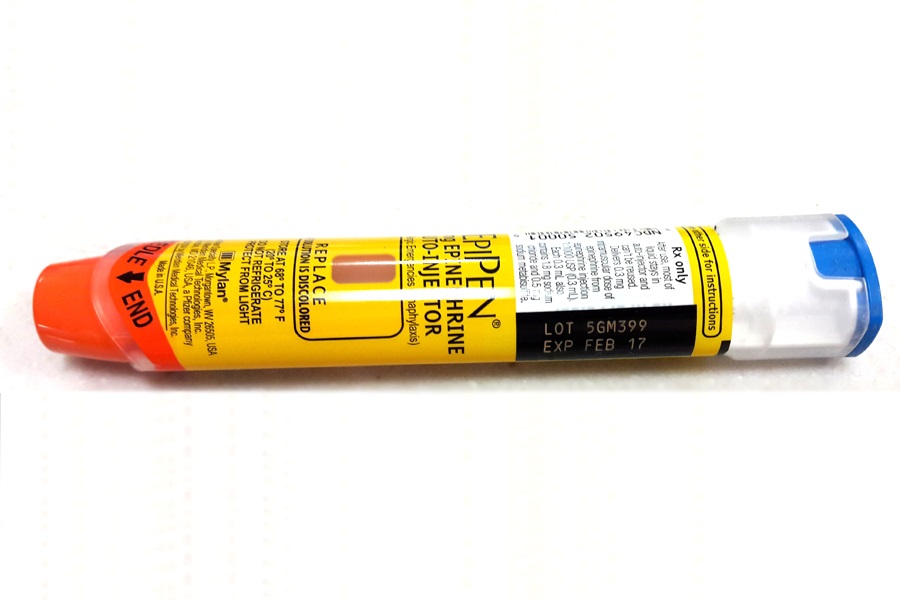Network squeeze: Controversies continue over narrow health plans
“Many patients are simply accepting pure cash pricing for procedures—as if they had no insurance coverage at all—because it is cheaper than if they were to stick with their narrow-network options.”
Los Angeles colorectal surgeon Dr. Allen Kamrava regularly faces financial challenges related to narrow-network health plans.
He recently performed a gastrointestinal procedure on a patient at a local hospital. Both he and the hospital were in-network providers for the patient’s plan. But unbeknownst to him and the patient, the anesthesiologists and pathologists involved in the procedure were not. So the patient ended up on the hook for $4,500 for those out-of-network provider services. Had the patient gone to a nearby out-of-network outpatient surgery center and paid for the entire procedure out of pocket, the total bill would have been less than $1,000.
“Many patients are simply accepting pure cash pricing for procedures—as if they had no insurance coverage at all—because it is cheaper than if they were to stick with their narrow-network options,” Kamrava said.
Narrow-network plans have grown in popularity, particularly on the Affordable Care Act‘s insurance exchanges, because their cheaper premiums appeal to price-sensitive consumers. About 70% of plans sold on the exchanges in 2014 featured a limited network, and their premiums were up to 17% cheaper than plans with broader networks, according to a study by consulting firm McKinsey & Co. Regardless of what happens legally or politically with the healthcare reform law, narrow-network plans are likely to continue proliferating because of those price advantages.
MH Takeaways
Narrow-network plans have gained members because of their lower premiums, but experts say there is significant dissatisfaction with access, surprise bills and provider directory information.
But there is significant consumer and provider dissatisfaction with how many of these plans are organized, including concern about inadequate access and information. Critics say insurers have made many missteps in building adequate networks and maintaining accurate, up-to-date provider directories. In some rural areas, there are too few in-network providers, forcing plan members to travel long distances to see one. Some patients find out that a hospital or doctor was out-of-network only after they receive a shockingly high bill. So far, federal and state regulations on narrow networks are vague and inconsistent, experts say.
Carmen Balber, executive director of California-based advocacy group Consumer Watchdog, said today’s narrow networks are reminiscent of the HMO-style plans that spurred a backlash in the 1990s. There could be growing political pressure to regulate narrow networks, particularly if they start migrating into the employer health plan sector. “If insurance companies start to try moving these narrow networks to employer-based plans, then we’ll hear a loud consumer groundswell against this practice,” Balber said. “We’re already hearing it now.”
Some observers predict that insurers will have to ease up on how skinny they make their networks. The Congressional Budget Office said this month that it anticipates premiums for the second-lowest-cost silver plans on the exchanges will increase by 8.5% a year on average between 2016 and 2018. It said the increase is partly because insurers will not be able to sustain the lower provider payments and narrower networks that are used to hold down the premium costs.
But Amanda Starc, assistant professor of healthcare management at the University of Pennsylvania, said narrow networks are likely to survive, especially if they succeed in forcing higher-cost hospitals to lower their prices.
New York has been one of the most aggressive states in addressing consumer complaints about narrow networks. A law that goes into effect April 1 protects patients who didn’t agree to or unknowingly received services from out-of-network providers. Instead of patients receiving bills, insurers and providers have to resolve the issue through mediation, said Jackie Selby, an attorney at Epstein Becker Green in New York City.
After controversies over network adequacy led to several lawsuits against insurers, California health plans now face requirements enacted by the state Legislature last year to ensure they offer adequate provider networks. Insurers will have to provide annual reports to the California Department of Managed Health Care about their provider networks, and the agency’s assessment of that data will be posted on its website.
In February, the CMS tightened network rules for Medicare Advantage plans. The agency said Advantage plans could be fined or sanctioned if they “fail to maintain complete and accurate directories” or do not have an adequate network of providers accepting new patients.
On the non-Medicare side, however, the CMS has been less aggressive. It said in February that it will not make any further changes to network adequacy rules until the National Association of Insurance Commissioners finishes work on a model law. Exchange plans will be required to update provider directory information at least once a month starting in 2016, as well as include 30% of essential community providers.
Overall, however, federal and state network adequacy regulations “don’t have any bite and are not well-defined,” said Keith Ericson, a Boston University health economist. And for some remote regions of the country, neither narrow networks nor the emerging regulatory parameters are practical.
Monica Lindeen, Montana’s insurance commissioner, told a House panel last June that she has urged insurers selling plans in Montana through HealthCare.gov to include at least 80% of providers in their plans. “The federal 30% standard is not in the best interests of Montanans and could result in the closest (essential community provider) being 400 miles away,” she said.
More-populous states don’t agree on how an adequate network should be defined. Some use specific standards such as wait times for doctor appointments, while others merely require plans to have a network that does not lead to an “unreasonable delay” of care. “It’s extremely difficult for regulators to define a sufficient network with specificity,” said Peter Rich, a Los Angeles-based partner at McDermott Will & Emery who works with hospitals and insurers.
Other states, including Mississippi and South Dakota, have enacted “any willing provider” laws in response to narrow networks, requiring insurers to contract with all providers who accept their terms. Insurers have opposed such laws because they could reduce their ability to bargain on rates and keep premiums down.
Wellmark, South Dakota’s Blue Cross and Blue Shield plan, declined to say how the state’s new any-willing-provider law, approved by voters in a ballot initiative in November, has affected its business. However, it said, “It takes away the ability of insurers, on behalf of their members, to develop a network of providers based on their efficiency and quality.”
Anecdotally, narrow-network plans have led to surprise out-of-network bills for consumers. Hospitals often contract out for emergency physicians, radiologists, anesthesiologists and other hospital-based specialists. While a hospital may be in a patient’s plan network, some of its doctors may not be—and patients may face bills based on out-of-network rates.
EmCare, a large Dallas-based physician outsourcing company, said it tries to have its physicians on the same insurance contracts as the hospitals where they work, but acceptable deals can’t always be reached with plans. An EmCare spokesman said the problem of patients facing out-of-network bills from EmCare physicians “comes up in some areas on occasion.” He added that “when (insurers) set arbitrary rates, they force physicians out of their network.”
The ACA partly regulated these out-of-pocket cost situations for emergency care, said David King, an attorney with Bass, Berry and Sims who represents providers in disputes with managed-care companies. The law requires insurers to pay out-of-network emergency providers the largest of three amounts: the median in-network rate, the amount the plan generally pays for out-of-network services, or the Medicare rate. Providers then can balance bill the patient for the difference, but patient cost-sharing must be treated as if it were in-network.
The ACA did not prohibit balance billing in states where it was already allowed. Only 13 states have laws that restrict out-of-network providers from balance billing people with health insurance, according to the Kaiser Family Foundation.
In light of these varying regulations, litigation has been frequently used to address issues associated with narrow networks. Last year in California, customers filed a class-action lawsuit against Anthem, Blue Shield of California and Cigna for allegedly deceiving customers about which hospitals and doctors participated in their limited networks. Plaintiffs called the plans a “bait and switch.”
In New York, the state attorney general’s office settled this month with EmblemHealth, requiring the insurer to cover anesthesiology services that accompany in-network screening colonoscopies, even if the anesthesiologists are out-of-network.
Some hospitals have sued insurers for being left out of plan networks. Children’s hospitals and cancer hospitals sometimes have been excluded from narrow-network plans because of their higher prices. However, America’s Health Insurance Plans says “high-value provider networks are helping to improve the quality of care and mitigate cost increases for consumers.”
Kamrava said he tries to be in as many networks as possible. He has admitting privileges at Cedars-Sinai Medical Center, but that hospital is excluded from many patients’ narrow-network plans because of its high prices. He’s considering becoming an in-network physician at Providence St. John’s Health Center, a hospital seven miles from his office, because that would accommodate more of his patients.
But the move could be problematic for him and his patients. The commute could take up to an hour because of L.A.’s brutal traffic. “It’s going to be a major toll on my quality of practice,” Kamrava said.
Original article posted by Bob Herman of Modern Healthcare on March 28, 2015






















